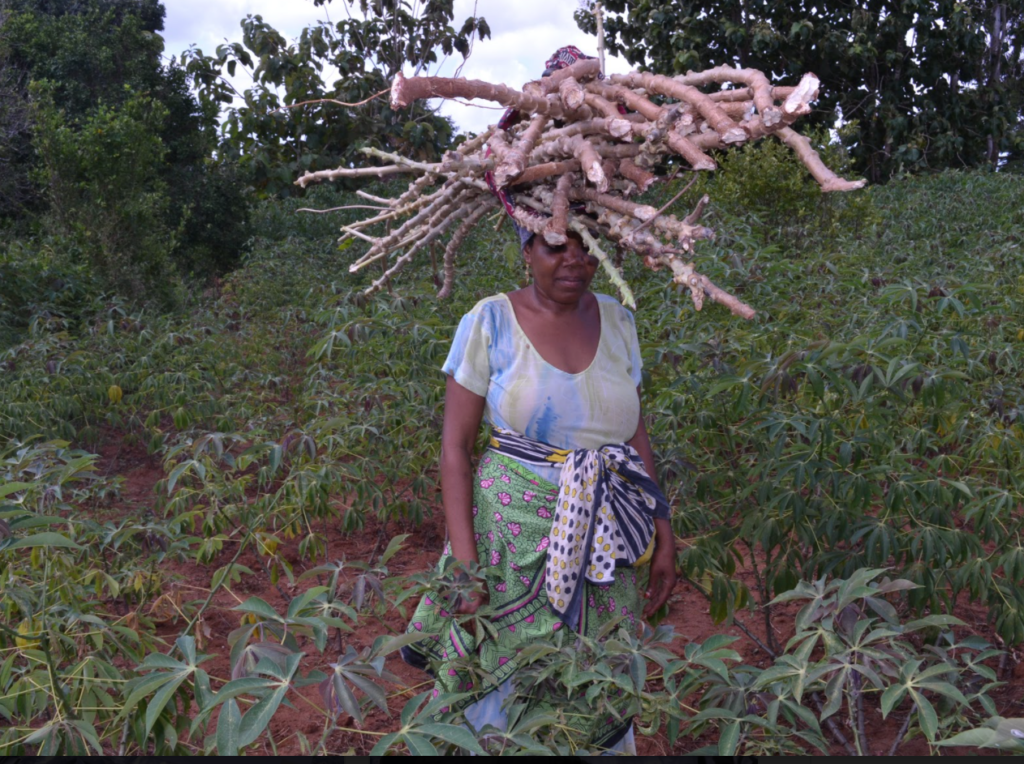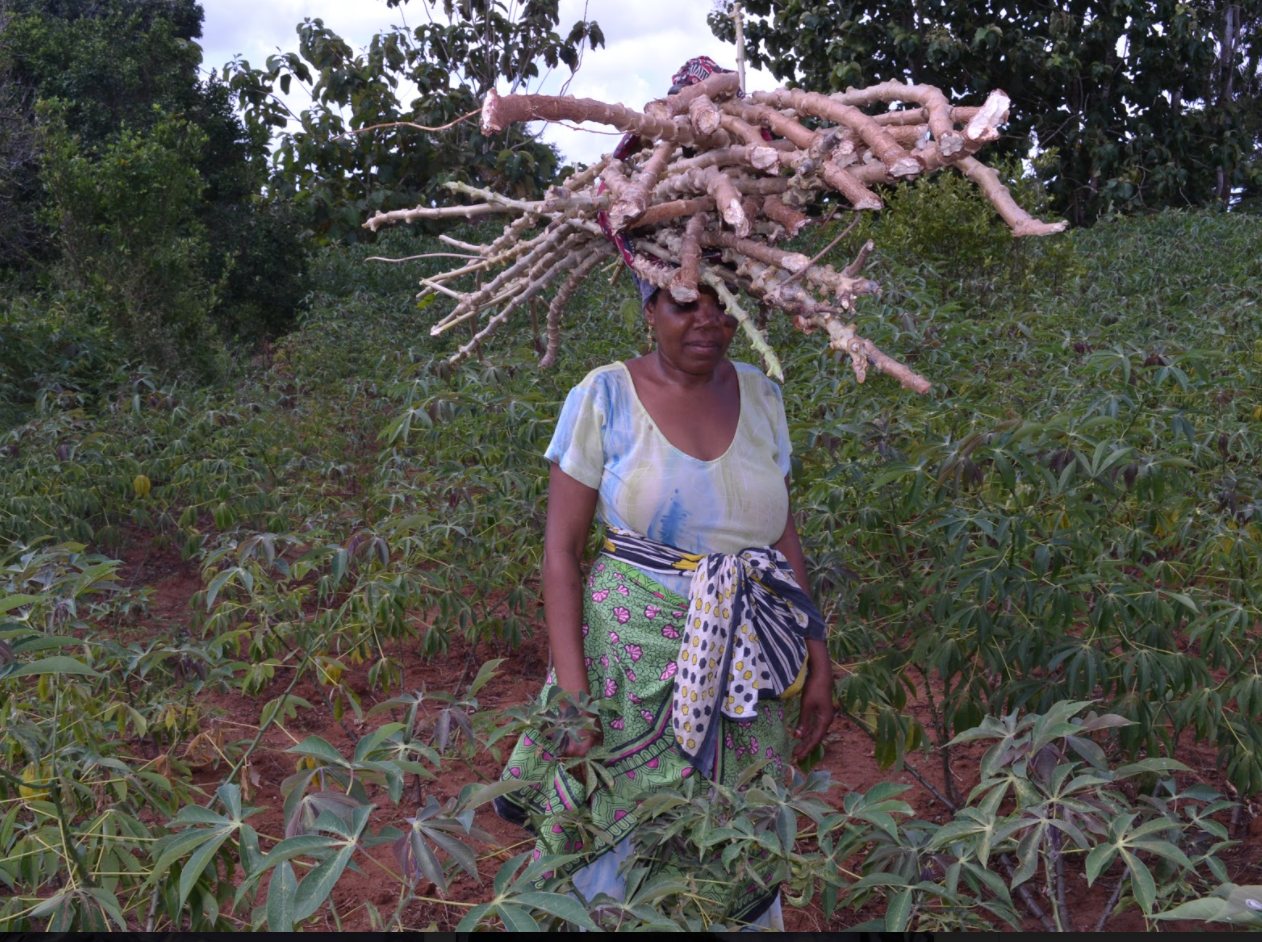*High production records, small scale processors on the rise
*The crop back at the top as the most important food crop in Zanzibar
*Kizimbani variety runaway success
By Anthony Muchoki
Enjoying the beauty of the bullish cassava plantations at Kizimbani Village, Urban/West Region in Unguja, Zanzibar, it is not easy to see the desolation state that had hammered the area about 7 years ago.
The bountiful harvests have been enjoyed for 4 years consecutively, wiping out the desolation of the past that was replicated in other areas of Unguja and Pemba. Today, the replication is about the bounty harvests.
“Today, for majority farmers the worry is never about production but about markets,” says a smallholder farmer, farmer leader and small-scale processor, Mr Maulid Otham Juma.
He looks back at the bad years with a sour taste. It had reached a point where he was harvesting less than 5 bags of cassava in his one acre farm. At the moment, in the dry season he produces 65- 70 bags and during the rainy season, it rises to 75 and over.
Cassava is not just any other crop in the world famous archipelago, known most for its spices, beaches and cultural footprints. For ages the crop has been a dear food crop (main source of carbohydrates) and a sure complementary cash crop for majority of Zanzibaris.
Any interruption preventing good Cassava harvests alway have painful ramifications. It is the stabilising factor in food security, unlike in Tanzania mainland, where maize rules the day and night.
Over the years so long as good harvests of cassava are registred, majority Zanzibaris are able to cushion themselves from internal and external economic upheavals.
About 90 percent of the island’s subsistence farmers grow the crop. Thus, it was a great headache when between 2007 to 2011 their plantations were wiped out by severe outbreak of Brown Streak Virus and Cassava Mosaic Virus.
Each time farmers planted, the cycle of destruction would repeat itself. In early 2000s only about 20 percent of the crops were being affected by the two ill omens. Gradually, the crops became so resistance to all available pesticides. By 2007, almost 100 percent of the crop in every farm was being ravaged.
Farmers saw one of their major lifeline slipping out of their hands as they abandoned the crop after multiple production failures. Come 2011 only a hardififul hadcore cassava farmer, had remained active, not for production, but just for the love of the crop.
Imported cassava products had started finding way in the isles, to feed the Zanzibaris love of cassava. Unfortunately, imported cassava had a major shortcoming.
Zanzibaris love ‘kisamvu.’ – where were they going to get it without growing cassava?” posed farmer Maulid Otham Juma.
“It was terrible. We started depending on rice,” which is more expensive, noted another farmer Mr Said Issa.
‘Kisamvu-‘ is made from cassava leaves. It is a very popular vegetable soup in the spice island, which combined with Ugali(cassava) and fish, makes a nutritious dish for the fishing and farming communities, that comprise the majority.
Zanzibar Agricultural Research Institute (ZARI) with the the Ministry of Agriculture and Natural Resources (MANR) worked hard to find a solution, notes ZARI’s head of Roots and Tuber research Dr Haji Saleh, probably, the most experienced cassava breeder in Tanzania.
With the help of Alliance for a Green Revolution in Africa (AGRA) and other development partners like Institute of Tropical Agriculture (IITA), new varieties, were developed, which were largely resistant to the diseases that were ravaging the crops at that time.
The ownership of the new varieties was vested on ZARI, a government owned institution to ensure posterity. Previously, new varieties had been introduced but farmers rejected them as they did not have their preferred taste. This time round to make it work, it was decided local varieties would be improved. Consumers wanted cassava that would retain their traditional tastes.
With support by AGRA, the government of Zanzibar set out sensitizing the masses about the Improved Cassava Varieties through farmers training and workshops. Setting up demo farms and working with local farmers, the government was able to convince the people the new varieties were for their own good.
Of the four varieties developed at ZARI’s Kizimbani Research Station during implementation of AGRA project, one variety, known as Kizimbani, has became a runaway success. Today about 60 percent of the farmers in the Islands use it, according to a researcher at the Ministry of Agriculture, Natural Resources, Livestock and Fisheries (MANRLF), Mr Ali Kassim Salum.
Apart from Kizimbani, other varieties developed were named ‘ ‘Mahonda,’ ‘Kama’
and ‘Machui,’
Farmers at their farms and even traders all allude that they love Kizimbani variety because of its sweet taste. Other two important features are that it matures early and has high yield”
Ms Salma Omar Mohamed, a research officer with Kizimbani Research station, is grateful to AGRA for supported the free distribution of planting materials to poor farmers under a voucher program, which has played a key role in the success story.
Most Important food crop
Initiatives to improve cassava value chain have the blessings of Zanzibar President Dr Ali Mohamed Shein. He noted that from time immemorial Zanzibaris have been good eaters of cassava. He commends ZARI and development partners that have worked hard to ensure the people are able to enjoy fresh cassava for breakfast and cook it with coconut for lunch.
For Dr Haji Saleh, Cassava Zanzibar’s most important food crop at the moment, grow year round. “Everywhere you go in Zanzibar rural areas Cassava is most dominant food crop and the staple for the majority of poor in rural areas,” he notes.
“The crop is vital for our stability… the people are assured of food security, thanks to huge cassava production in the recent years,” notes Mr Suleiman Deve of Machui village.
Production
With Kizimbani variety, farmers using good agricultural practises are able to harvest 20 tonnes per hectare, while in the past they would barely get 5 tonnes. The improvement of productivity has made net returns per hectare to increased to about Tsh 1,946,250 and 3,196,250 respectively
Because of the good harvests, AGRA partnered with Farm Concern International to increase the income of smallholder farmers. Almost 11,000 farmers have been linked up with buyers. There is notable increase of village processing and market access for cassava.
Hamad Rashid Mohammed, Zanzibar minister of Agriculture, Natural Resources, Livestock and Fisheries, noted that cassava today has many uses, which have helped to improve the economic well being of the farmers.
It being used to making cakes, biscuits, chips and the processed flour is long lasting, among other uses. Despite the market for the crop being only domestic, it’s impressive and the ministry was working to address the emerging challenges.
“This is one of the mainstream crop in Zanzibar Agricultural Transformation initiative,” he noted adding that there were numerous efforts being made to commercialise cassava farming and processing.
To build on the momentum of increased yields, AGRA partnered with Farm Concern International, to increase income for 10,592 smallholder farmers by linking them with buyers so as to enhanced commercialization, village processing and market access. In the half of 2015 sales worth USD 164,563.11 were realized.
Numbers
- Tanzania Cassava production is 7 million metric tonnes (mt) per annum
- 84% of cassava production is used for human food
- Cassava is second after maize in importance as food crop in Tanzania, but first in Zanzibar
- Area under cultivation in Zanzibar -34,000 ha (Unguja 11,840ha
and Pemba 22,160 ha)
AGRA Grants
- 2010, AGRA grant to Zanzibar Gov -$157,500, purpose Enhancing farmers’ initiatives for multiplication and dissemination of cassava virus tolerant planting materials in Zanzibar
2011, AGRA grant to Zanzibar Gov- $230,000, purpose to Improve farmers’ capacity in production and dissemination of quality cassava planting materials in Zanzibar. - 2014- AGRA grant to Farm Concern International $ 681834: Cassava Commercialization through Village Processing for Food Security and graduation into Industrial Use

